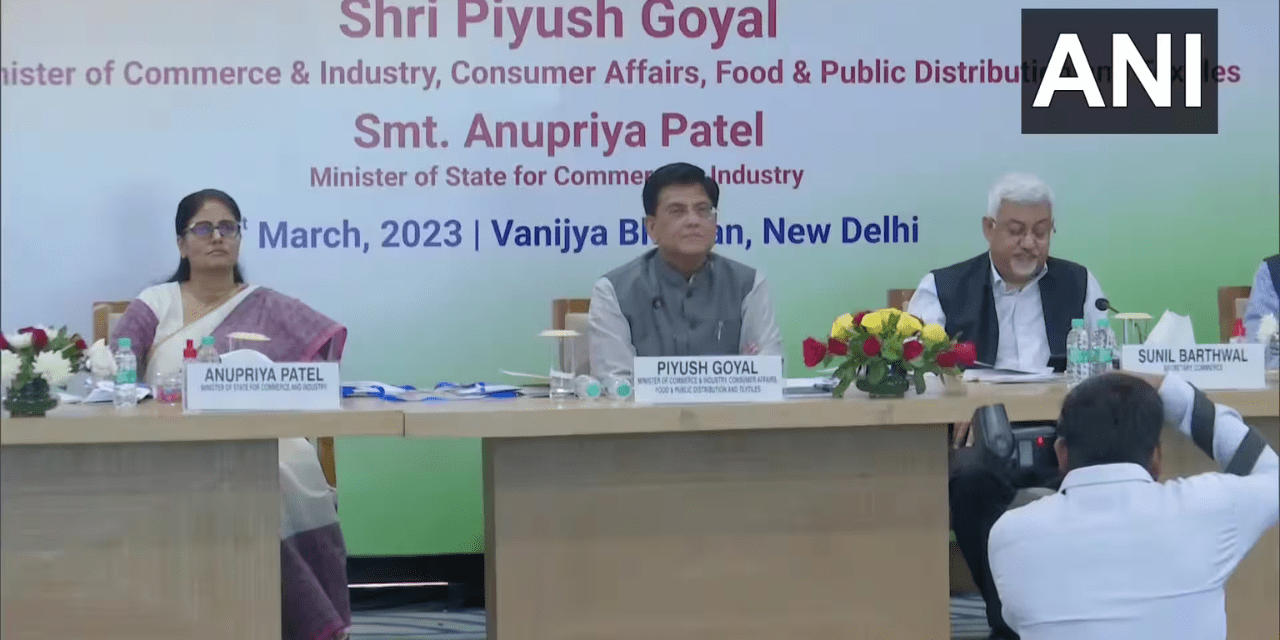The $2 trillion export goal set for 2030 and adopted by FTP 2023 includes $1 trillion in exports of goods and $1 trillion in exports of services.
The $2 trillion goal looks challenging but not insurmountable when compared to the combined goods and services export target for FY23 of around $770 billion. Yet, while exports of services have exhibited admirable resilience in the face of the ongoing global unrest brought on by the Russia-Ukraine war and the slowdown in key Western economies, exports of commodities have not fared as well. The $422 billion in goods export in FY22 is projected to be slightly surpassed in FY23, although this is mostly because of the strong performance in the first four months of the fiscal year.
So, the announcement of FTP 2023 was timely. to provide exporters with much-needed support. Since WTO rules rule out the use of fiscal incentives, FTP 2023 concentrates on maintaining WTO-compliant duty remission programmes.
The industry finds considerable comfort in the fact that the FTP has no set expiration date. Exporters will operate more confidently if there is no doubt about the sustainability of input duty remissions programmes like the RoDTEP and RoSCTL and regular payments by the government. Also, the FTP has made numerous efforts to simplify life for exporters, merchants, and especially MSMEs. Efforts have been made to make doing business easier by lowering transaction costs and implementing e-initiatives. The emphasis has been on MSMEs. The sector is the focus of numerous facilitation efforts, as they should be, and the policy. Efforts like promoting e-commerce exports and designating districts as export centres may also result in an increase in exports. Further measures have been implemented to support the government’s initiatives to promote textile, dairy, and agricultural manufacturing.
The government might play a significant role in assisting with the $2 trillion export goal if it remains watchful and changes the FTP in response to the needs of exporters.
What are towns that thrive at exporting. What new cities have been added to the list of existing cities?
Based on the potential for growth, towns that produce commodities worth at least 750 crore can be designated as Towns of Export Excellence (TEE). for exports. However, the threshold limit is 150 crore for the handicraft, agriculture, and fishing industries. The Market Access Initiative (MAI) programme offers financial assistance under priority for export promotion projects for marketing, capacity building, and technology services to recognised associations of units in the TEEs. Moreover, the Export Promotion Capital Goods (EPCG) Scheme entitles Common Service Providers (CSP) recognised by the DGFT in the TEEs to authorization. Of course, TEEs also benefit from brand credibility and global recognition.
There were already 39 of these TEEs throughout the nation, and FTP 23 has added four more to the list. Among these are Varanasi for handloom and textiles, Moradabad for handicrafts, Mirzapur for handcrafted carpets, and Faridabad for clothing. handicrafts.
What does the policy state regarding exports from e-commerce?
The government anticipates that e-commerce exports might increase from current levels of $5 to $10 billion annually to as much as $200 to $300 billion annually by 2030.
E-commerce exports must be given access to all FTP benefits. To develop relevant recommendations to boost e-commerce exports, an inter-ministerial committee made up of representatives from the Department of Revenue, Department of Post, and DGFT has been formed. The essential IT system enablements will be finished in six months, it has been decided.
What further lessons can be drawn from the policy?
Initiatives such simplifying Special Chemicals, Organisms, Materials, Equipment, and Technology, a one-time Special Amnesty Program for Violating Export Obligations Important aspects of FTP 2023 include the (SCOMET) licencing procedure, adding the PM MITRA scheme to the list of programmes eligible to receive benefits from the CSP and EPCG schemes, emphasising the promotion of districts as export hubs, taking steps to increase online approvals, and implementing paperless filings to lessen physical interface.

